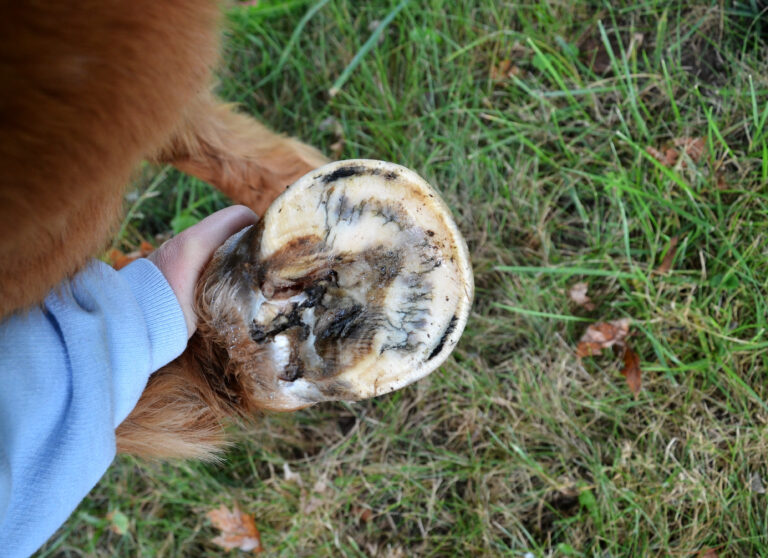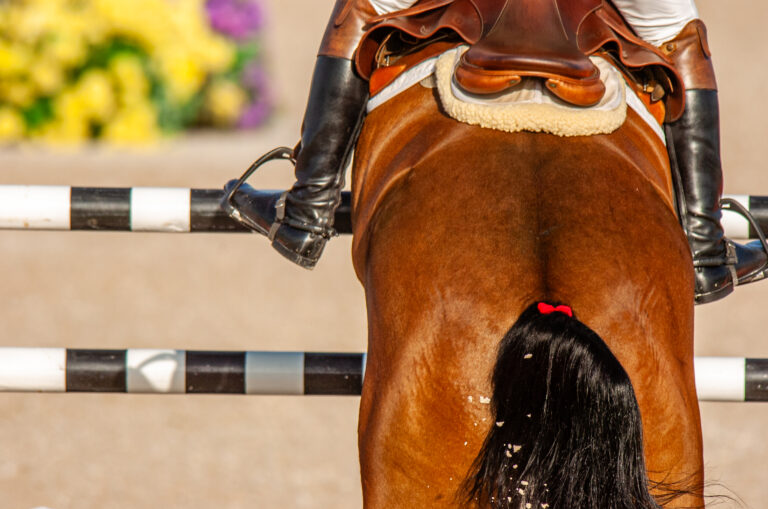Body condition influences everything in your horse’s life, from reproductive efficiency, to performance, to good health. By using Body Condition Scoring, you can find out what kind of shape your horse is in, and work to improve the score. Scoring focuses on critical areas of the body, based on palpable fat and visual appearance.
Ideal Scores
Most horses, including performance horses and growing horses, should be in a body score of 5-6. For optimum reproductive efficiency, broodmares should be a 5-7, and not allowed to lose condition such that they are below a 5 during breeding season. Horses over a condition score of 7 may be at a greater risk for developing metabolic disorders such as insulin resistance.

Key:
A. Along the Neck
B. Along the withers
C. Crease down back
D. Tailhead
E. Ribs
F. Behind shoulder
1. Poor
Extremely emaciated. Spinous processes, ribs, tailhead, hip joints, and lower pelvic bones project prominently; bone in withers, shoulders and neck are easily noticed. No fatty tissue can be felt.
2. Very Thin
Emaciated. Slight fat covers base of spinous processes, transverse processes of lumbar vertebrae feel rounded. Spinous processes, ribs, tailhead, hip joints, and lower pelvic bones are prominent. Withers, shoulders and neck structure faintly discernable.
3. Thin
Fat buildup about halfway on spinous processes. Transverse processes cannot be felt. Slight fat covers ribs. Spinous processes and ribs easily discernable; tailhead prominent but individual vertebrae cannot be identified visually. Hip joints appear rounded but easily discernable; lower pelvic bones not distinguishable. Withers, shoulders and neck accentuated.
4. Moderately Thin
Slight ridge along back. Faint outline of ribs discernable. Tailhead prominence depends on conformation, but fat can be felt around it. Hip joints not discernable. Withers, shoulders and neck not obviously thin.
5. Moderate
Back is flat; ribs easily felt, but not visually distinguishable. Fat around tailhead feels a bit spongy. Withers round over spinous processes; shoulders and neck blend smoothly into body.
6. Moderately Fleshy
May have slight crease down back. Fat over ribs spongy; fat around tailhead soft. Small fat deposits behind shoulders and along sides of neck and withers.
7. Fleshy
Might have slight crease down back. Individual ribs can be felt, but noticeable filling between ribs with fat. Fat around tailhead soft; fat deposited along withers, behind shoulders and along neck.
8. Fat
Crease down back. Difficult to feel ribs. Fat around tailhead very soft; area along withers filled with fat. Area behind shoulder filled with fat, noticeable thickening of neck. Fat deposited along inner thighs.
9. Extremely Fat
Obvious crease down back. Patchy fat appears over ribs. Bulging fat around tailhead, along withers, behind shoulders and along neck. Fat along inner thighs may rub together. Flank filled with fat.
Click here for a demonstration on how to body condition score your horse with Purina Equine Nutritionist, Dr. Katie Young.
Save











